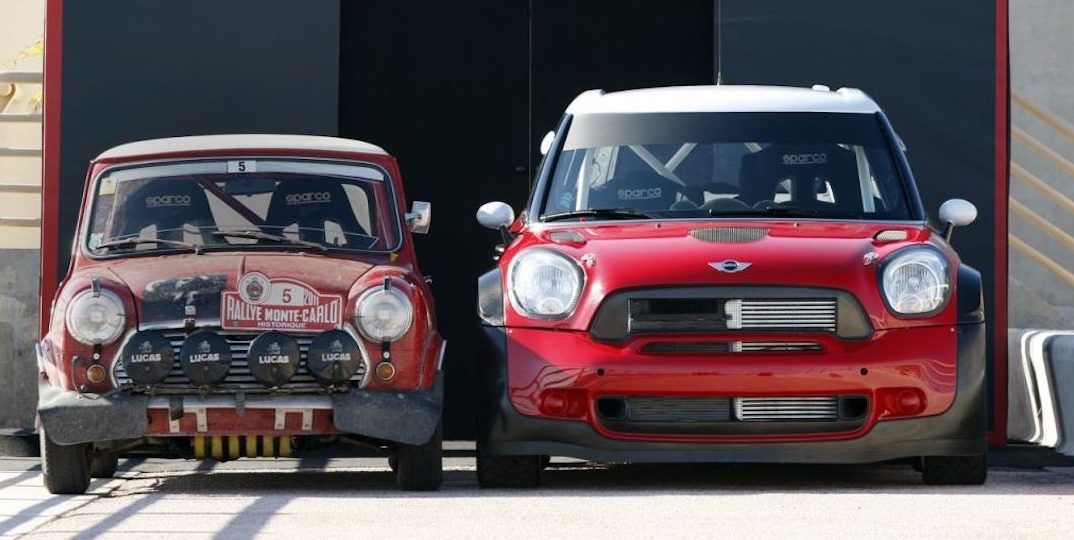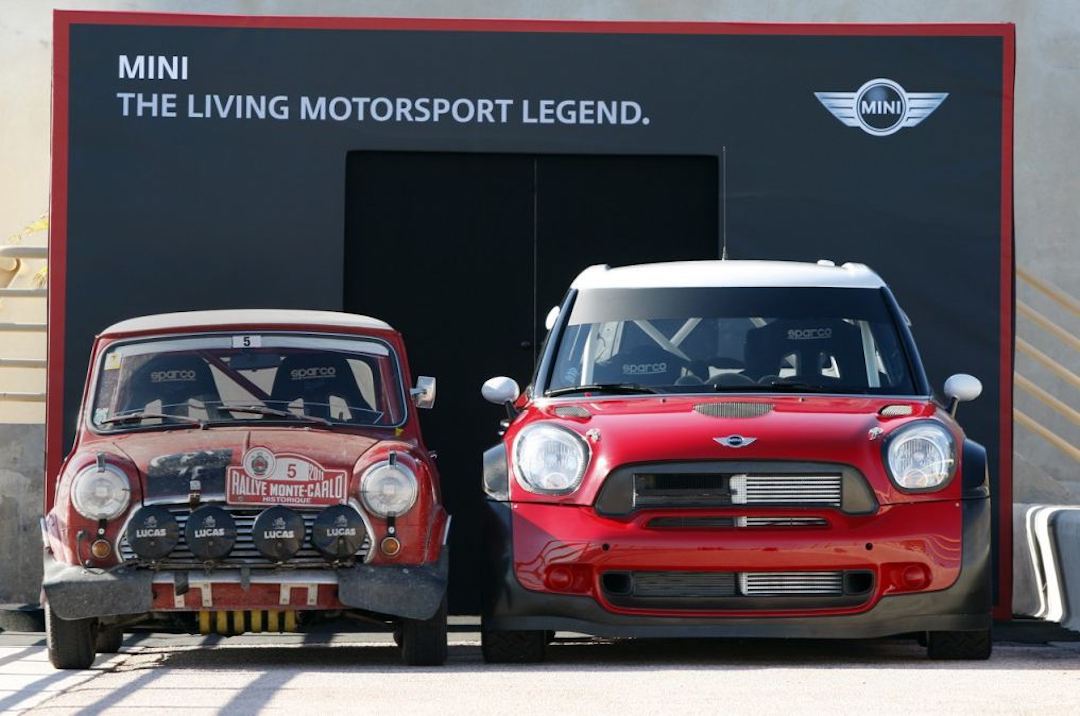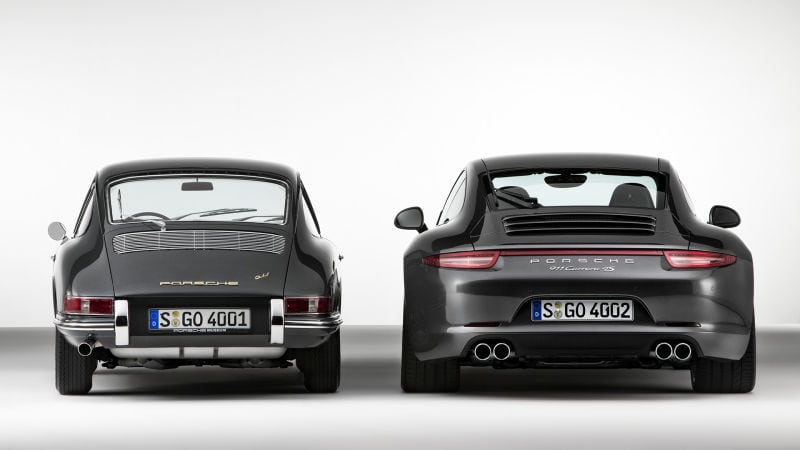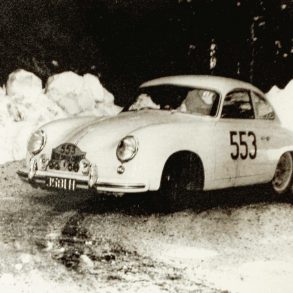
When first introduced in 1959, the Mini Cooper was a revelation of automotive simplicity, economy, and delight. Designed by Sir Alec Issigonis, primarily called upon to respond to the 1958 fuel crisis plaguing the UK and much of Europe, the diminutive Mini instantly won hearts, charming a wide range of buyers with its purposeful and reliable performance. The Mini was small, very small, but it was larger than the cheaply built and somewhat questionable three-wheeled micro cars, offered far more durability and comfort, and delivered nearly as much value as higher priced cars, while still offering comfortable seating for four. By 1967, the Mini Mark II was being built all over the world, under a range of brands, brimming with different configurations. The lightweight construction and engine tuning options allowed for performance besting even competitive sports cars of the period. Coupling the near slot-car like handling with just a bit more horsepower, the little Mini could hold its own against far more expensive performance cars proving so in rallies and track competitions. And while entire books have been written on the merits of the innovative Mini design—unibody construction, cost effective and simple features—the focus of this article addresses the significant and recent increase in size.
https://www.youtube.com/watch?v=3yxwiQ9XDok
The Mini, has become the Grande
I suppose it was bound to happen. Even a large soda is larger than ever before. And if you want an extra-large, here’s your thermos and free refills. With no shame at all, T-Shirts are now available in XXL. Last week while attending a local car show, I saw a 1967 Mini Cooper parked next to a full-sized Ford Galaxie. I marveled at how both cars carried four people, yet the Mini could almost fit in the trunk of the Galaxie. Across the street was the new Mini Countryman, lined up just right so I could eyeball the two cars in comparison.
I was struck by how large the Mini had become, even from a distance. Easily 30% larger in all dimensions, the new Mini appears like Superman, while the original remains Clark Kent. But if the Mini were the only car to have experienced this bloat, it could simply be characterized as marketing to a larger (ahem) audience. The Mini, however, is not the only car visiting the all-you-can-eat buffet for a third serving. One look at the current iteration of the new Porsche 911 and you can see the same effect, albeit in a range of different proportional directions, but still quite a bit larger. Even the new Rolls-Royce, a modern bastion of grace and elegance, sports 22” rims and a belt line taller than a Lotus. So what’s behind all this bloat?

Two major factors are dictating changes in modern car interpretations of classic vehicles; safety and market tastes. Modern cars are full of safety features, and safety needs more space. Airbags, side impact bracing, crumple zone deflection space and body panels designed for repair/replacement. Large dimensions once thought to be better under impact, no longer dominate vehicle architecture. New computer modeling methods show more efficient ways of distributing volume and this sort of design highly impacts body shapes and packaging. The front fender of a 1998 Ford Escort is nearly three times the size of a 2018 Ford Fiesta (with a front fender about the size of a laptop), but the vehicle masses are distributed very differently.

Brilliantly engineered crumple zones absorb impact and reduce energy transfer to the occupants far better than larger cars of the past. All this redistribution of mass causes the belt line to rise up, wheels to get larger, and girth to increase. But there’s another major reason cars are getting bigger. Car buyers have been absorbing SUV and minivan packages for more than 30 years now, both as owners and as part of the visual landscape. They’ve acclimated to larger car volumes, even in their smaller choices. Car manufacturers are building more SUV-like traits into sedans and sport compact platforms in order to give the appearance of an SUV, even in small platform cars. Engine technology has also improved dramatically such that fuel economy and performance can still be achieved with a heavier car. More space, more girth, and increased performance with improved MPG means happier customers. Big not only makes for a safer car, it turns out, the Big aesthetic actually sells more cars.
But there is one more big reason for bigger cars. Bigger cars offer bigger profits for car companies. Larger cars are loaded with more options and features and sell with far more profit margin than lower cost, lower optioned, economy cars. The former low cost, zero options, rubber floor car is long gone, leaving clever car companies to offer more leather, complex digital features and abundant convenience accessories on their smaller cars, adding weight and heft to the formerly delicate frames of economy-oriented small cars.
Tomorrow’s cars will continue to be Venti, Grande, and (no I’m not making this up) Trenta (a whopping 31-oz serving). The future of cars will be larger, wider, and loaded with more optional features. Which means that many of the most sought after collectible cars of yesterday will continue to be popular with enthusiasts craving pure and elegant iconic statements harkening back to a simpler automotive time.













